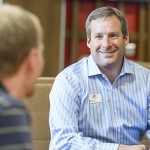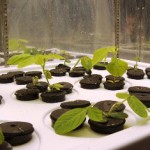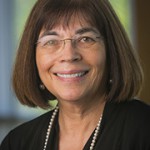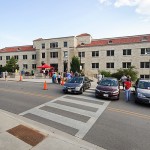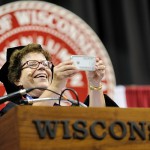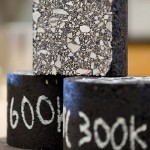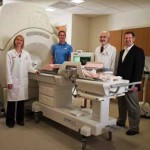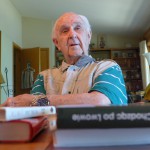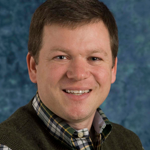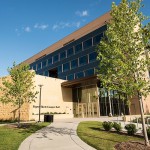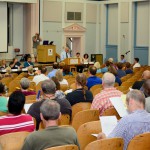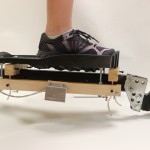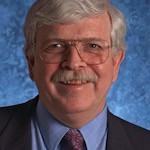Category Employee News
New director right at home — literally — in University Housing
The mission statement of University Housing really resonated with Jeff Novak: “Be the place where everyone wants to live” — to the point where “everyone” includes Novak himself. Novak has been on campus for just a few weeks, but he is already feeling at home in his new position as director of University Housing for UW–Madison.
Early education and child care expansion for UW families offered
The UW Office of Child Care and Family Resources is expanding its childcare services for UW students, faculty and staff.
A touching story: The ancient conversation between plants, fungi and bacteria
The mechanical force that a single fungal cell or bacterial colony exerts on a plant cell may seem vanishingly small, but it plays a heavy role in setting up some of the most fundamental symbiotic relationships in biology. In fact, it may not be too much of a stretch to say that plants may have never moved onto land without the ability to respond to the touch of beneficial fungi, according to a new study led by Jean-Michel Ané, a professor of agronomy at the University of Wisconsin–Madison.
Research and graduate education transition includes familiar, new faces
As UW–Madison’s research and graduate education programs begin an historic transition, there will be many familiar faces and a few new ones on the third floor of Bascom Hall.
Marsha Mailick Q & A
Marsha Mailick recently talked with University Communications’ Terry Devitt about the administrative changes to come, the experiences that have prepared her for her new role, and the challenges UW–Madison faces in the areas of research and graduate education.
No easy path, Mailick eager to take on one of university’s toughest jobs
If Marsha Mailick is at all intimidated by the prospect of taking on one of the hardest jobs on the UW–Madison campus, there is no hint of it in her demeanor, as she navigates the familiar territory of Bascom Hall.
Campus prepares for students moving into residence halls
The bulk of more than 7,400 UW–Madison students will be moving into the university residence halls Wednesday, Aug. 27, and Thursday, Aug. 28. Students are welcome to move in any time after 8 a.m. on their assigned move-in day.
UW center teams up with five states to address asphalt issues
More than 80 percent of major roads in the United States are still surfaced with asphaltic mixtures - and the liquid asphalt, a byproduct of oil refining, remains a bit of a chemical mess, an inconsistent, complex mix of hydrocarbons. So to understand how different kinds of asphalt will hold up under the weight of vehicles and the punishment of the elements, road engineers must use physical methods, from ovens to hydraulic testing devices, to inflict stress and extreme temperatures upon the mixtures.
UW-Madison chosen for federally funded cloud computing research
Cloud computing, which allows users of technology to tap into remote, shared infrastructure and services, is a major facet of today’s world. Whether or not we realize it, countless aspects of our daily lives — from social media to drug discovery — are now enabled by cloud computing. The University of Wisconsin–Madison has been chosen to be part of a National Science Foundation-funded project called CloudLab — a joint effort of university and industry teams for the development of cloud infrastructure and fostering the high-level research that it supports.
University spinoff aims to hit the mark precisely with brain-scanning tool
As brain surgeons test new procedures and drugs to treat conditions ranging from psychiatric disorders to brain cancer, accuracy is becoming an ever-greater issue.
Legend in genetics at forefront of book about heroism during 20th century’s darkest hours
Waclaw Szybalski, 92, a genius of genetics who has been repeatedly mentioned as a candidate for the Nobel Prize, grew up as an aspiring scientist during World War II in the eastern part of Poland. Many of Szybalski's most significant wartime roles concerned a decidedly applied type of science: He cooked TNT so the Polish resistance could sabotage rail lines. He participated in smuggling typhus vaccine to Jews in the Warsaw Ghetto. And he fed lice and supervised "louse feeders."
Herbarium director receives award for telling the story of plants
Ken Cameron, director of the Wisconsin State Herbarium, received the Peter Raven Award from the American Society of Plant Taxonomists Aug. 5. Cameron, also a professor of botany at the University of Wisconsin–Madison, is a world expert on the orchid family.
New, innovative School of Nursing building opening for fall semester
Signe Skott Cooper Hall isn’t just a new building. It’s a place where students at the University of Wisconsin–Madison’s School of Nursing will learn using the latest technology.
Historic first meeting for Classified Staff Congress
History was made Monday as representatives of the first-ever Classified Staff Congress met for the first time in Bascom Hall.
No one-size-fits-all approach in a changing climate, changing land
As climate change alters habitats for birds and bees and everything in between, so too does the way humans decide to use land. Researchers at the University of Wisconsin–Madison and Aarhus University in Denmark have, for the first time, found a way to determine the potential combined impacts of both climate and land-use change on plants, animals and ecosystems across the country.
Grants fund UW technology projects on the road to commercialization
An exercise machine that helps stroke victims walk. An advanced technology for assessing the progress of prostate cancer. A faster process for making neural stem cells to investigate new treatments for injury and disease. A cheaper, more beautiful LED light bulb. A game to teach meditation. These projects, and a dozen more, are beneficiaries of the first round of awards by the University of Wisconsin–Madison’s Discovery to Product, or D2P, program, which began operating in March.
New analysis links tree height to climate
What limits the height of trees? Is it the fraction of their photosynthetic energy they devote to productive new leaves? Or is it their ability to hoist water hundreds of feet into the air, supplying the green, solar-powered sugar factories in those leaves?

